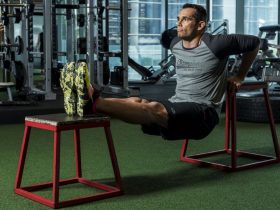When it comes to fitness, the focus is often on the intensity of the workout itself—pushing your body to new limits, breaking a sweat, and achieving those elusive fitness goals. However, what many people overlook in their fitness journeys is the equally important process of exercise recovery. Recovery is not simply a passive break from exercise, but rather an active, essential phase in the fitness cycle that allows the body to heal, rebuild, and emerge stronger.
In this article, we’ll explore the science of exercise recovery, why it’s crucial for long-term fitness success, and how to implement recovery strategies into your routine. Understanding the recovery process is not just for athletes; it’s essential for anyone looking to maximize the benefits of their workouts, avoid injury, and achieve sustainable progress.
1. What Happens to Your Body During Exercise?
Before diving into recovery, it’s important to understand what happens to your body during exercise. When you engage in physical activity, especially resistance or endurance training, you put stress on your muscles, bones, and connective tissues. This stress causes microscopic tears in muscle fibers, a process known as muscle breakdown. Your body also uses energy stores, such as glycogen, to fuel your workout, depleting these reserves.
While this might sound like a negative process, it’s actually essential for muscle growth and improved performance. The key lies in recovery: your body needs time to repair these microscopic tears, replenish energy stores, and adapt to the new demands placed on it during exercise. This adaptation is what leads to increased strength, endurance, and overall fitness.
2. The Science of Recovery
Recovery is when the body does its most important work. During the recovery phase, muscle fibers repair and grow stronger, energy stores are replenished, and inflammation is reduced. It’s in this phase that the body becomes more resilient to future workouts, allowing you to train harder and more effectively. The process of recovery is influenced by several factors, including:
-
Muscle Repair and Growth: After exercise, the body repairs the tiny muscle tears that occurred during the workout. This repair process involves the activation of satellite cells, which fuse with muscle fibers to repair and rebuild them. This process contributes to muscle growth (hypertrophy) over time.
-
Energy Restoration: Intense exercise depletes glycogen stores in the muscles, which the body uses as a primary energy source. Recovery allows your body to replenish these stores, ensuring you have the necessary fuel for your next workout.
-
Reducing Inflammation: Exercise, particularly strength training or high-intensity workouts, can cause inflammation in muscles and joints. Recovery helps reduce this inflammation, preventing long-term damage and speeding up the healing process.
-
Hydration Balance: Exercise causes fluid loss through sweat, and hydration plays a crucial role in recovery. Water is vital for nutrient delivery, temperature regulation, and overall muscle function.
3. The Different Types of Recovery
Recovery isn’t a one-size-fits-all approach; it involves various methods depending on the intensity of your workout, the type of exercise performed, and your fitness level. Let’s break down the main types of recovery strategies:
1. Active Recovery
Active recovery involves performing low-intensity exercises on rest days or immediately following a hard workout. It helps to maintain blood flow to the muscles, flush out metabolic waste products (such as lactic acid), and reduce muscle stiffness. Active recovery can include light activities like walking, cycling, yoga, or swimming. These activities help to maintain flexibility, mobility, and circulation without straining your muscles.
2. Passive Recovery
Passive recovery, on the other hand, involves complete rest or minimal physical activity. After intense workouts, it’s essential to allow your muscles to fully recover and rebuild. Passive recovery includes rest days where you take a break from strenuous exercise, sleep well, and allow your body to restore itself. This phase is crucial for optimal muscle repair and growth, especially after intense resistance training or long endurance sessions.
3. Nutritional Recovery
Proper nutrition plays a significant role in the recovery process. After a workout, your muscles need both protein and carbohydrates to repair and refuel. Protein helps to rebuild the damaged muscle fibers, while carbohydrates replenish glycogen stores. Aim for a post-workout meal or snack that includes both macronutrients—such as a protein shake with a banana or chicken with brown rice. Additionally, consuming healthy fats, vitamins, and minerals will support overall recovery and well-being.
Hydration is equally important. When you sweat during exercise, you lose both water and electrolytes (sodium, potassium, magnesium). Rehydrating after exercise ensures that your body has the necessary fluid balance to function optimally and aid in muscle recovery. Drinking water or a rehydration beverage with electrolytes is a good practice after intense physical activity.
4. Sleep and Rest
The importance of sleep in recovery cannot be overstated. During deep sleep, the body undergoes significant healing and muscle repair. Growth hormone, which plays a key role in tissue repair, is released primarily during the first few hours of sleep. Aim for 7-9 hours of quality sleep per night to maximize your body’s ability to recover and repair.
Rest isn’t limited to sleep alone; taking rest days, as well as taking breaks during workouts (e.g., between sets or exercises), allows your body to recharge and perform better in future sessions. Avoiding overtraining by scheduling regular rest periods helps prevent burnout, injury, and fatigue.
4. Common Recovery Mistakes to Avoid
Even with the best intentions, beginners and seasoned athletes alike can make mistakes when it comes to recovery. Here are some common pitfalls to avoid:
1. Skipping Rest Days
Rest days are vital for muscle recovery. Many people mistakenly believe that skipping rest days and working out every day will yield faster results, but in reality, this can lead to overtraining, which increases the risk of injury and hampers performance. Your muscles need time to rebuild and repair, so be sure to schedule rest days to avoid burnout.
2. Not Hydrating Properly
Dehydration can severely impact recovery, leading to cramps, fatigue, and slower muscle repair. Always drink water throughout the day and especially after exercise to maintain proper hydration levels. If your workout involves heavy sweating, consider drinking a beverage with electrolytes to replace lost minerals.
3. Ignoring Nutrition
What you eat after a workout is crucial for recovery. Skipping meals or relying on unhealthy food choices can hinder muscle recovery. Make sure to consume a balanced post-workout meal that includes protein, carbs, and healthy fats to support muscle repair and glycogen replenishment.
4. Not Listening to Your Body
Pain is not progress. If you feel persistent pain or discomfort after exercise, it’s essential to give your body the rest it needs. Pushing through pain can lead to injury. Listen to your body and recognize the difference between soreness (which is normal) and pain (which may indicate injury).
5. Conclusion: Recovery is an Essential Part of Fitness
Exercise recovery is not just a luxury or afterthought—it is an integral part of the fitness process. By understanding the physiological processes involved in recovery, you can better support your body’s repair and adaptation mechanisms, ultimately leading to improved performance, injury prevention, and sustainable progress.
Incorporating proper recovery strategies into your routine—active recovery, passive rest, nutrition, hydration, and sleep—will help you achieve long-term success. By recognizing the importance of rest and recovery and making it an active part of your fitness plan, you’ll be able to perform at your best, prevent burnout, and make steady progress toward your fitness goals. Always remember, recovery is just as important as the workout itself.









